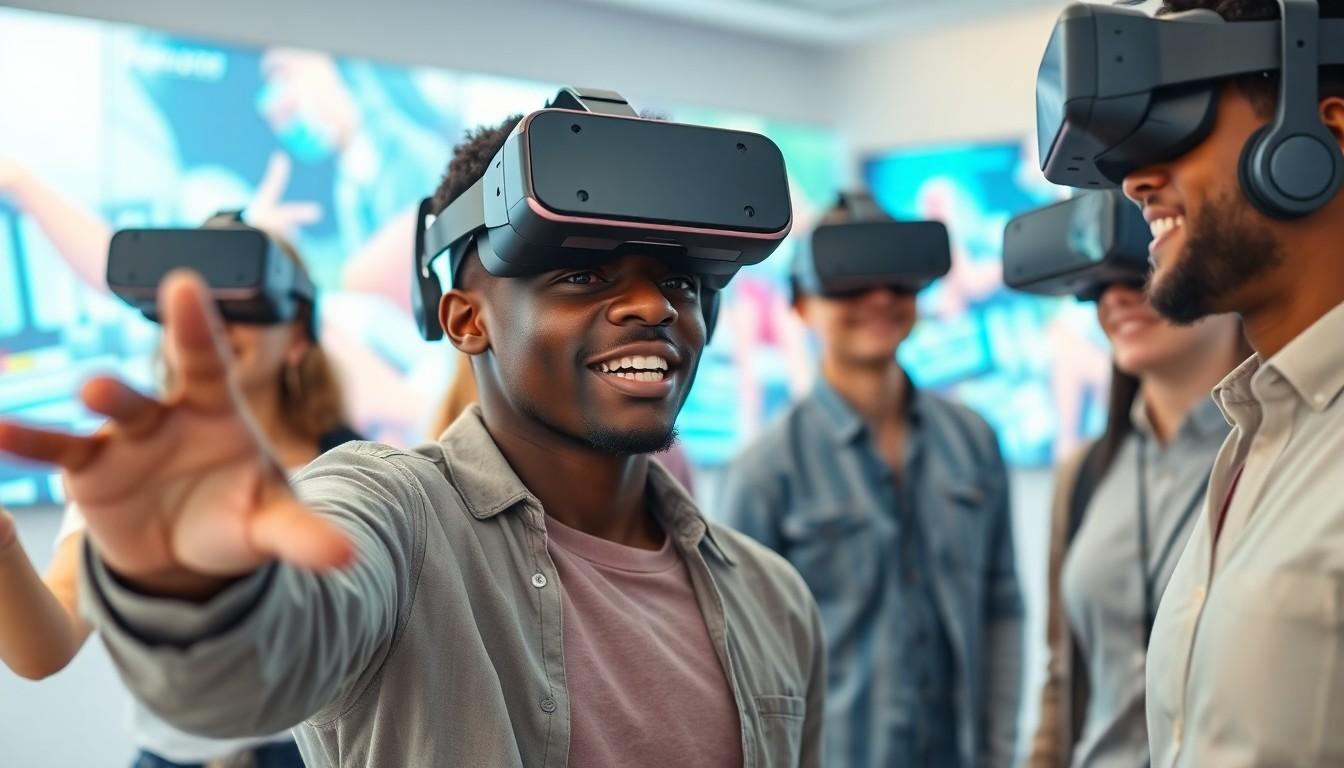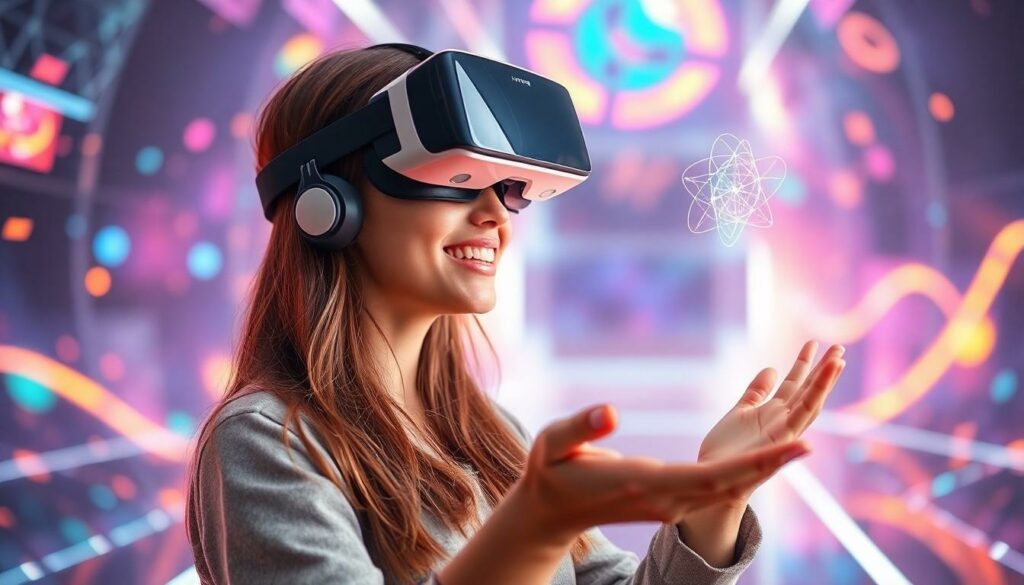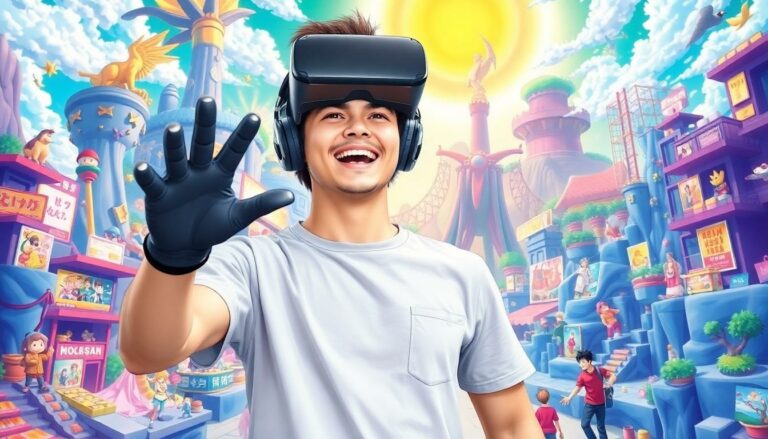Table of Contents
ToggleImagine slipping on a headset and diving into a world where reality takes a backseat, and creativity is the driver. Welcome to the realm of virtual virtual reality, where the only limit is your imagination. This isn’t just another tech buzzword; it’s a wild ride through layers of digital landscapes that’ll make your head spin—literally and figuratively.
What Is Virtual Virtual Reality?
Virtual virtual reality immerses users in a boundless digital landscape where creativity and exploration flourish. This innovative technology offers experiences beyond traditional virtual reality, creating unique environments for users.
Definition and Concept
Virtual virtual reality refers to a highly immersive experience designed to place users into simulated environments that exist purely in the digital realm. Users engage with computer-generated spaces using advanced headsets, allowing limitless creativity and interaction. As they immerse themselves in these virtual worlds, the distinction between reality and digital experiences blurs. This concept emphasizes the potential for users to manipulate and explore these environments, showcasing the limitless opportunities that can arise from virtual experiences.
Key Features
Virtual virtual reality includes several key features that enhance user experiences. Firstly, the immersive nature of the environments captivates attention and creates opportunities for exploration. Secondly, interactive elements provide users the ability to manipulate objects and navigate through digital spaces effortlessly. Thirdly, user-generated content allows individuals to shape experiences based on their creativity. Fourthly, social integration enables users to connect with others in shared virtual spaces. Lastly, adaptive interfaces enhance user engagement by responding to actions in real time. These features contribute to a compelling virtual reality that exceeds conventional expectations.
The Evolution of Virtual Virtual Reality

Growth in virtual virtual reality showcases significant advancements since its inception. This section explores historical context and technological advances that shape the landscape of this immersive experience.
Historical Context
Virtual virtual reality traces its roots back to early computer simulations. The 1960s and 70s featured pioneering work in virtual environments, laying foundational concepts. The term “virtual reality” emerged in the 1980s, with developers exploring immersive experiences. By the 1990s, advancements in computer graphics and display technologies led to more immersive applications. The rise of the internet in the late 1990s further accelerated development, allowing users to connect in shared virtual spaces. Over the decades, experimentation with user-generated content and interactive environments transformed user engagement.
Technological Advances
In recent years, advancements in hardware and software have revolutionized virtual virtual reality experiences. High-resolution displays enhance visual fidelity, enabling more realistic environments. Graphics processing units (GPUs) have significantly improved rendering speeds, leading to smoother interactions. Furthermore, motion tracking technology allows for precise user movements in virtual spaces. Developers leverage artificial intelligence to create adaptive environments that respond dynamically to users. Innovations in networking facilitate seamless collaboration and interaction among users in shared experiences. These technological strides continue to push the boundaries of what is possible in virtual virtual reality.
Applications of Virtual Virtual Reality
Virtual virtual reality offers diverse applications across various sectors, enhancing experiences and interactions.
Entertainment Industry
The entertainment industry benefits significantly from virtual virtual reality. Users experience immersive gaming environments in which they can explore vast worlds. Music concerts and events also leverage this technology, allowing attendees to engage with artists in entirely new ways. Film production employs virtual sets, enabling creators to visualize scenarios before physical filming begins. Participation in virtual reality experiences expands audiences, attracting individuals who seek unique entertainment options. Many developers continue to experiment with storytelling techniques in this medium, fostering innovation and creativity.
Training and Education
Training and education leverage virtual virtual reality to provide engaging learning experiences. Highly interactive simulations facilitate skills development, especially in fields like medicine or aviation. Students practice procedures in realistic scenarios without real-world risks. Various educational institutions implement virtual field trips, transporting learners to historical sites or scientific environments. Additionally, corporate training programs utilize virtual virtual reality to enhance employee onboarding and skills training. These applications promote knowledge retention through immersive experiences that traditional methods cannot replicate.
User Experience in Virtual Virtual Reality
User experience in virtual virtual reality focuses on immersive engagement and interaction. This technology reshapes how users perceive and navigate digital environments.
Immersion and Interaction
Immersion captivates users by transporting them into vivid, dynamic worlds. Environments change responsively to user actions, enhancing the sense of presence. Interaction includes manipulating objects, solving puzzles, and completing challenges, which actively engages participants. Users experience environments crafted from their imagination, creating personal connections to these digital spaces. Realistic graphics and sound design further heighten this immersion, enabling emotional responses akin to those in the physical world.
User Feedback
User feedback significantly informs the evolution of virtual virtual reality. Gathering insights helps developers refine experiences by identifying strengths and weaknesses. Responses highlight preferences for interface designs and suggest improvements in interactivity. Participants often share suggestions for additional features or content, enhancing overall engagement. Continuous updates based on this feedback foster a collaborative environment, strengthening community ties while ensuring that experiences remain relevant and exciting.
The Future of Virtual Virtual Reality
The future of virtual virtual reality holds exciting possibilities. Emerging trends show significant advancements in technology and user experience.
Emerging Trends
Increased focus on social experiences drives innovation in virtual environments. Enhanced artificial intelligence creates more immersive interactions than ever. Real-time rendering improves graphics, leading to stunning visuals that captivate users. Customization options expand, allowing users to shape their environments according to personal preferences. Hybrid experiences blend physical and digital realities, pushing boundaries further. Moreover, users embrace accessibility features, ensuring a broader audience can engage with virtual virtual reality. These trends suggest a brighter, more inclusive future for immersive digital experiences.
Potential Challenges
Several challenges impact the growth of virtual virtual reality. High costs for hardware and software may limit widespread adoption. Concerns over privacy and data security often arise as users navigate these digital spaces. User fatigue can also become a notable issue, with prolonged sessions leading to discomfort. Furthermore, developers face the task of maintaining an engaging content pipeline amidst this fast-evolving landscape. Finally, navigating the balance between creativity and usability can significantly affect user satisfaction. Addressing these challenges proves essential for realizing the full potential of virtual virtual reality.
Virtual virtual reality stands at the forefront of technological innovation. Its ability to create immersive experiences that blend creativity with interactivity opens up new horizons across various sectors. As advancements continue to reshape this digital landscape, users can look forward to more personalized and engaging environments.
The potential applications in entertainment and education highlight its versatility, while the focus on user experience ensures that each interaction feels meaningful. By addressing challenges and embracing emerging trends, virtual virtual reality is poised to redefine how people connect with digital worlds. This evolving technology promises to enhance not just leisure activities but also learning and professional development, making it an exciting frontier for the future.




